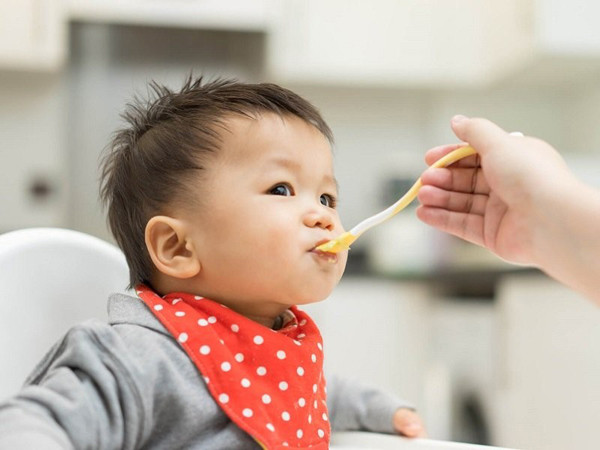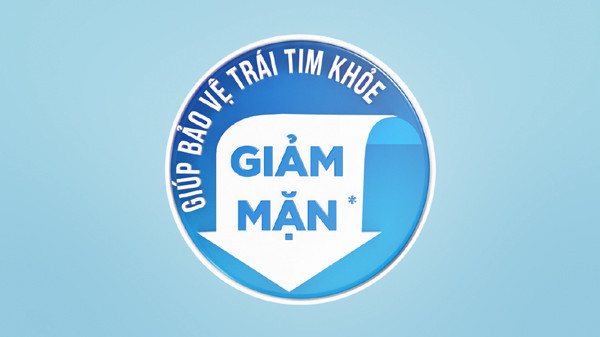How to use spices properly for children from a nutritionist

Recommended salt intake by age
– Can you tell if the use of spices in food processing for children today is really good or not?
Basically, adding seasoning makes the dish more palatable, however, because most spices have a salt (sodium) component, and if you eat more salt than the body needs, it will cause problems. adversely affect health. Moreover, each age needs a certain amount of salt, children will have a lower need for salt than adults, and the younger the age, the less the need, especially for children under 1 year old, salt/spice is close to as unnecessary.
The fact that children eat salt passively from a young age not only causes immediate health problems, but in the long run, forms a taste for salty foods, if this situation is prolonged, it will cause risks of cardiovascular disease and stroke. stroke.
According to WHO recommendations, each adult should only eat less than 5g of salt/day, however, according to an investigational study by the Ministry of Health in 2015, our people eat an average of 9.4g of salt/day (twice as much as 2 times a day). times the required level).
According to the Recommended Sodium Needs of the Institute of Nutrition/Ministry of Health (2016), at each age, only a certain amount of salt is needed. Specifically:
Children aged 0-5 months should only consume 100mg of sodium (equivalent to 0.3g of table salt). If babies are breastfed, they will get the right amount of minerals, including sodium, from breast milk.
Children 6-11 months should only consume 600 mg of sodium (equivalent to 1.5g of table salt).
Children 1-2 years old: should only consume <900 mg of sodium (equivalent to 2.3g of table salt)
Children 3-5 years old only need < 1100 mg of sodium (equivalent to 2.8g of table salt)
Children 6-7 years old should only consume < 1300 mg of sodium (equivalent to 3.3g of table salt).
Children 8-9 years old should only consume <1600 mg of sodium (equivalent to 4g of NaCl table salt).
Children 10-11 years old should only consume < 1900 mg of sodium (equivalent to 4.8g of table salt NaCl).
Subsequent age groups are the same as adults: < 2000 mg Sodium (< 5g table salt NaCl)

Reducing salt is not simply reducing salt
– What are the harmful effects of eating salty foods compared to the body’s needs?
In fact, babies and young children only need a very small amount of salt in their diet, and this amount of salt can already be included in foods used by the family such as: powdered foods, biscuits, milk, etc. .
Children under 1 year of age, adding salt to flour/porridge may affect the child’s kidneys. Because the kidneys of children under 1 year old have only 1/3 of the filtration rate of adults. Eating salty foods makes children thirsty and drink more water, leading to more urination, which also eliminates other important ions, including calcium. This is the cause of calcium loss in young children, causing rickets and stunting in Vietnamese children into adulthood.
This bad habit of mothers inadvertently creates a habit of eating salty foods in their children when they are older, making them more susceptible to diseases such as high blood pressure, heart disease, etc.
– So, how should the recommended use of spices be done, sir?
Eating less salt is essentially reducing the amount of sodium in the body, but it needs to be understood more broadly: a salt-reduced diet is not simply about reducing salt but also reducing salt in all spices and foods for children. In the way of cooking, using salty spices to prepare dishes for children, we need to pay attention to:
Children under 12 months, we do not need to add seasoning because this amount of NaCl is already available in weaning powder, formula or fruit… just process and keep the available flavors of the dish. The salt seasoning only makes the child’s kidneys become overloaded and has to increase salt excretion through the urine.
For children aged 1-2, you can add spices to them, but at this age they still can’t eat according to the amount of seasoning used by adults. The appropriate amount of salt for rice flour or porridge is from 0.5 to 1g/day (only 1/5 of adult needs). With canned powders or other solid foods, we should pay attention to the ingredients announced on the package.
When children are 3-5 years old, even though they are familiar with seasoned foods, to ensure the health of their kidneys and digestive system, we should pay attention to only adding salt to dishes of about 50 % compared to adults (2.8g/day).
The salinity of children’s dishes can increase gradually – about 2/3 of adults, when the child is 6-7 years old because at this stage, the baby’s kidneys are quite complete and can excrete salt from the body. better.
For children aged 8-9, the saltiness of the dish is slightly lower than that of adults. When children from 10 years old onwards, their taste buds have fully developed, we can give them the same seasoning regimen of the whole family with the amount of salt recommended by WHO.
However, most Vietnamese families are currently eating twice as much salt as WHO standards, so the daily use of spices needs to be adjusted to minimize excess salt:
– Reduce salt when processing food
– Actively cook at home more to adjust to reduce salt in all spices and foods
– Replace regular spices with salt-reduced seasonings to keep the rich flavor of the dish, while still being healthy. Currently, on the market, there are products to reduce saltiness, especially fish sauce, which also has products with a salt-reducing formula, identified by a logo or information on the label.

A salt-reducing diet needs to be pursued for a long time, persistently throughout life and have a suitable salt-reduction schedule depending on the taste of each family.
Vinh Phuc

at Blogtuan.info – Source: vietnamnet.vn – Read the original article here



